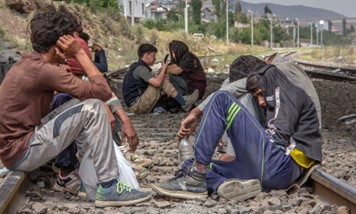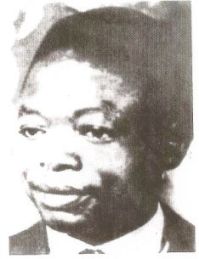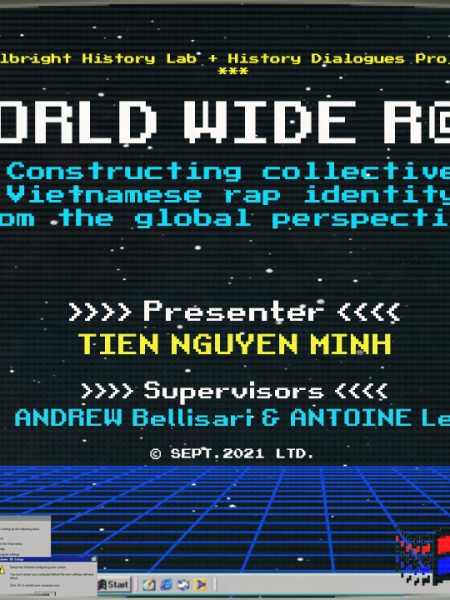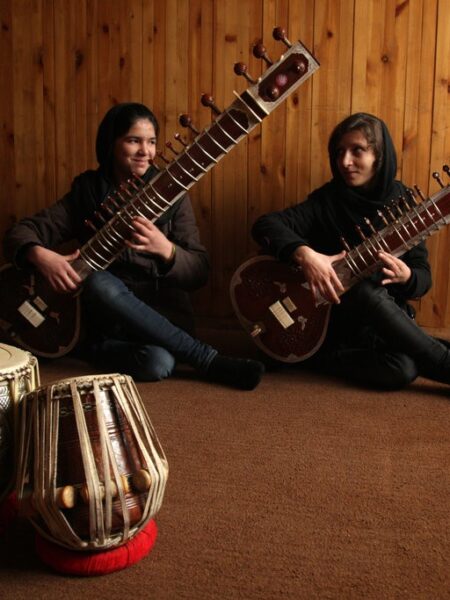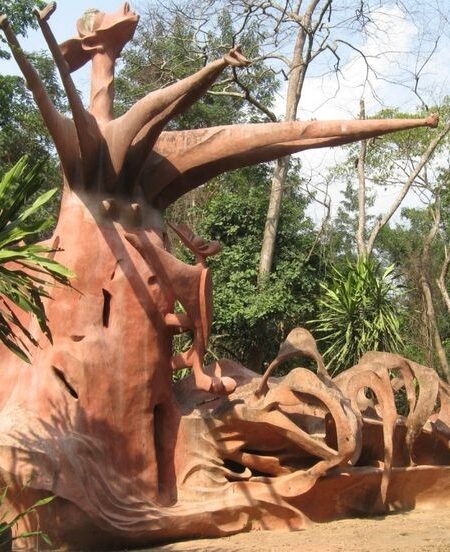Introduction
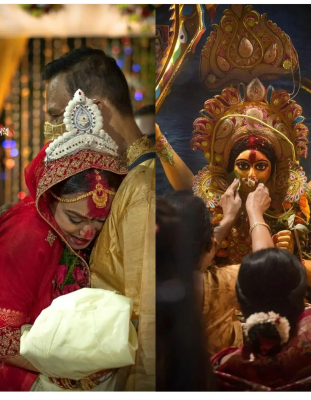
Durgā Pūjā is one of the most important Hindu celebrations, it is a ten-days festival, also known as Navarātrī[1], that falls on the lunar month of Aśvin which corresponds to the Gregorian months of September/October. Durgā Pūjā is West Bengal regional festival where it is celebrated in a pompous way, it is also an important festival for Indian northern states, Nepal, Bangladesh, etc. All over the Indian Subcontinent Durga Pūjā, also known as Daśaharā or Navarātrī, is celebrated in many different ways according to local and regional traditions and also the festival is gaining relevance abroad since it is celebrated by Hindu diasporic communities. During Navarātrī, different forms of the Goddess are worshipped through pūjās, artistic performances, food offerings, and prayers. However, the main form is the Devī as Durgā Mahiṣamardinī, the Slayer of Demon Mahiṣa. The myth behind this celebration is traceable in many different Puranic texts, like Devībhāgavata Purāṇa, Devī Māhātmya, Mārkaṇḍeya Purāṇa, etc.[2], that narrate the defeat of the Demon Mahiṣa by the hand of the extremely powerful Durgā, born and armed by the will of the Trimūrti[3] and the other Hindu Gods with their attributes in order to kill the evil demon and repristinate peace all over the earthly and divine world. On Daśamī the Victory of the Goddess is celebrated and it symbolically represents the victory of the Good over Evil for humankind’s sake. Durgā Pūjā is a religious festivity, but it is also a huge socio-cultural event that takes place in both private and public sphere. Goddess Durgā is celebrated and loved as a Mother for humankind and Hindu worshippers, but she is also recognized as a married off daughter, who is belied to come to reside in every worshipper’s home and in the temples for the time of Navarātrī and then, by the last day, she is believed to go back to her husband’s house on mount Kailāsa. The Goddess is treated and hosted into everyone’s house as a real human being, a divine being who has been invoked and become real for her children’s sake. Every little corner of the cities and urban areas gets clean, colorful and alive for the festival, paṇḍāls (temporary temples) are built all over the neighborhoods to host the mūrti[4] and allow people to have the darśana [5] even in the streets; all kind of theatrical, dancing and singing plays are performed for people amusement and as a sacred offering to the Goddess. The public Pūjā celebrations are called Sarbajanīn pūjās, they are financed by neighborhood associations and civic groups, everyone can participate despite their religious community and social status. In fact thousands of people are involved in Durgā Pūjā celebrations, taking part in different contests with prices that contribute to the creation of a particularly joyful and entertaining atmosphere. About modern celebrations of Durgā Pūjā, McGill states:
Festival activities actually begin months earlier, as communities organize themselves, collect money, purchase votive materials, and commission artisans and priests to prepare images and perform the rituals. And then, over the course of those nine autumn nights, the preparations culminate in a remarkable blend of revelry, visual pageantry, emotional catharsis, and high ritual in the votive rites to the Great Goddess[6].
The myth of Durgā as Mahiṣamardinī has given birth to a codified iconography of the goddess, represented while beheading the demon Mahiṣa on her vehicle the lion, holding different kinds of arms in her multiple hands.

The first representations of Durgā as Mahiṣamardinī are traced back to the VII/VIII century[7] and it is still the most famous representation of the Goddess. By the centuries, the way to represent Durgā is changed especially in ritual context, where the icon is meant to be the material body of the Goddess, in which her prāṇa[8] descends and inhabits through Sanskrit mantras. According to McDermott, the creation of the anthropomorphic mūrti is a relatively recent innovation[9], but it is currently considered essential for the celebration of the pūjā. Even if the artistic style has evolved for all the course of the XVIII and XIX centuries, the procedure for creating the clay anthropomorphic idol started by the XVI/XVII century and it remained almost the same codified one since then.
Today, thousands of Indian artisans prepare the Goddess’ idol for the festival with a specific procedure every year and, by the time of Navarātrī, deliver the icons to the closest watercourse as the closing ceremony of the festival. The Durgā Mahiṣamardinī is the most famous and celebrated one and such iconography, even though represents Goddess Durga with her daughters and sons (Gaṇeśa, Lakṣmī, Sarasvatī and Kārttikeya), still bears traces of her early fierce and warrior nature, since is depicted while killing the Asura.
Celebrating Navarātrī in a diasporic context
Ritual performance is a means of creating and crossing borders among dimensions and realities. It generates a liminal space and time where people can experience extraordinary actions and events. During ritual, crossing geographical borders becomes possible, and the link between mythical-religious imagery and ordinary world is re-affirmed and exalted. For a displaced community, according to Vásquez, diasporic livelihood enhances a feeling of unity and cohesion within a displaced community in hostile host environment, allowing to its member to imagine themselves as a unified ethnos, in the same way religion works on collective representation and shared ritual performances[10]. Both religion and diaspora “operates in similar ways in the management of time and space in the articulation of individual and collective identities, they have historically been closely intertwined, often buttressing and reinforcing each other”[11]. Durgā Pūjā, which is celebrated by Bengali and Bangladeshi Hindu community around the world, is an occasion to worship and celebrate the Goddess that is recognized as a national icon and constitutes a symbolic direct link with home country. That is why religious ritual and cultural celebrations linked to Durgā encourage the flourishing of a sense of belonging and identity abroad. Nevertheless, it is essential to remind that diasporic communities are deeply divided and heterogeneous, as we will see in the following sections. From April to August 2021, I conducted online research and interviews with some members of the Bengali diasporic community in Rome. All the interviewees I interacted with are people who share experiences of migration and displacement while maintaining a special connection with their home country (majorly Assam and Bangladesh) through religious and cultural events such as Durgā Pūjā. Coincidently, some of my contacts were Bengalis migrated to Italy, but some of them also spent some time in other European countries, such as Sweden, while one of the interviewees (a Hindu Bengali woman who now resides in Punjab) has never been in Rome. I have conducted seven oral history interviews online. This article examines in detail four of them. The interviews followed a general scheme based on some recurrent questions related to personal introduction, first and last memory of Durgā Pūjā, experience of migration, religious celebrations in their home country and abroad, and reflections on people’s perceiving of the Goddess in ordinary life. The first interviewee was Ms. Tanya Gupta, my 67-year-old former Hindi professor at Sapienza University. I had a previous conversation with her, and she anticipated some of the topics of my research and some of the question I was willing to ask her. At the beginning of our interview, I had the feeling that unwillingly our previous talk had influenced her. I asked her to do the interview since I knew that she has been part of a group that managed the organization of Durgā Pūjā festival in Rome in the past years. Ms. Tanya was born in Delhi, came to Rome in 1968 together with her family, because his father worked at FAO (Food and Agricultural Organization). All her teenager life she has been going back and forth from India to Italy and vice versa, until she finally resided in Rome and started teaching Hindi language at Sapienza University 1968. Ms. Tanya has been an incredible interviewee since she is the living example of border-crossing, she has passed through so many experiences of migration, integration and re-inventing her life. Even though she has lived in Italy her whole life as an adult, she felt attracted to Indian cultural background and started participating in Durgā Pūjā festivals in Rome because she was asked for by members of the Bengali community she never met before. When I asked her about her experience with Durgā Pūjā she answered:
Till I was in Delhi I never saw Durga Puja. In Rome, West Bengal Hindu Indian community approached me because they wanted to organize Durga Puja and they wanted me to collaborate with them. So, I accepted of course, and we organized this Durga Puja in Piazza Vittorio, that went on for five days and we collaborated also with all my students.
It was a socio-cultural event and of course it was also religious, because we had all idols of Durga, Ganesha and Karttikeya, Sarasvati and Lakshmi.
[…] That was my first experience with Durga Puja here, it lasted 5 days. By the day it was more religious, in the sense there was a pujari[12] who did the puja, and everybody could access.
Lots of people came, of course diasporic Bangladeshi, Indian community. Everyone came to do the pūjā.
In the evenings there were various events, for example we did lots of dances, singings performances, etc.
I remember I was there explaining what Durga Puja was and what it meant for the Hindu community who celebrate it and it was celebrated all over India[13].
Her emphasis was about the relevance of Durgā Pūjā as a socio-cultural event more than a religious one. What made her feel emotionally involved was the exceptional feeling of being part of a group, even if in normal conditions she does not recognize herself as part of it nor is she interested in celebrating Durgā Pūjā itself:
No, for me it was also very emotional. In the sense, this time I was participating in a religious and social event in Rome which was not really my personal interest… It is more a Bengali community celebration, but we all pray Mother Durga for what she represents, because she is a particular figure. She is not like the other female deities[14].
Ms. Gupta’s statement could support the idea that diasporic community has to feel part of a unique ethnic group during ritual, but we must keep in mind the ephemeral nature of this feeling because of the heterogeneity of the group, in this case the Bengali community in Rome. Also, she is not part of it at all, actually she considers herself as an ‘outsider’ who is not involved in political implications, for example. As Ms. Gupta has stated, during ritual and cultural events the diasporic community lives a common border-crossing experience that has positive consequences on people’s mental health:
Absolutely yes. It makes feel them connected to their own personal identity and also to community identity as such. It is a huge factor in reinforcing their identity and making them feel more integrated in a sense and not excluded if they are free to celebrate their own rituals.
[…] as you were saying about border-crossing, it’s like as if during these events they cross metaphorically Italian border to the Indian border. Ritual space becomes India/ West Bengal whatever, it’s no more Italy. That’s interesting. It becomes a sacred space, cause it’s a religious festival, but not only sacred also social. Like in an embassy, there you are in your country even abroad.
[…] Also for emotional and mental health, I feel, they are very important.
They are able to take forward for their families and themselves these traditions because they help their psychological equilibrium.
[…] I was an outsider. I observed from the outside, so I didn’t relate to the political aspect, I related more to the religious and spiritual aspect. I wasn’t interested to the political aspect[15].
Also dances and singing were performed during the five-days pūjā, they are popular but also religious didactic dances focused on the theme of motherhood and the figure of Durgā Goddess as a Mother. An extremely important data to underline is that, during our interview Ms. Gupta recalled and told me how diasporic community’s religious and cultural celebrations adapted according to the necessity in order to survive and preserve their sociocultural background abroad:
You know that after the celebrations, after the 5 days of celebrations, the idols are meant to be immerged in water, in a river, because Durga goes back to her husband Śiva. In Italy it was funny cause I told them: “we can’t put the idols in the Tevere” so it was a big discussion about what to do with this idol because it had to be immersed. What happened was that I’d like to have the statues, so I brought some statues at my place and some other people took the statues at their place but then you know what happened? I kept the status in my home, in small temple. Then my family members when they came to my place they told me that it was not to be done because the idol was supposed to be destroyed that I should not keep it in my home. So, I had to throw it away, I could not keep it.
L: If you don’t throw it away the ritual is not complete, is that right?[16]
Exactly. But you know all the other people didn’t object about taking the statues at home.
They didn’t insist in destroy them. They said: “Ok, you take them”. The Bengali community, they didn’t object to us taking the statues, they should have objected, they should have said “no, you cannot take the statue”.
According to the ritual, even if you cannot put it in the Tevere, you put some water on it, symbolically as if you are putting them in a river and then destroy it, that should have been the right ritual. But that was not respected.
My family members, when they came and saw the statues and told me “No, you shouldn’t keep the status here, you should throw it away”
L: They are from India, aren’t they?
Yes, yes […] In Bengal or in India they would never have done something like this. They would have taken to do the visarjan[17] to the river. But here it was difficult. What to do with the statue? It was difficult.[18]
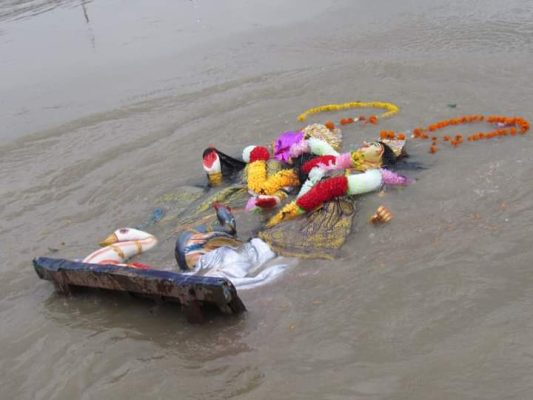
The act of visarjan signs the end of Navarātrī, it is the sacred farewell to Mā Durgā who is leaving her children to go back to her husband. Ms. Gupta emphasized the fact that the diasporic communities have to adapt themselves and their cultural background to a new environment and a new society. In European countries, Italy in our case, throwing objects into a watercourse is not allowed, that constitutes a huge obstacle to the good ritual’s resolution. According to local tradition, the mūrti is made and destroyed on Daśamī every year, but in a displacement context this is not possible, since shipping a mūrti from West Bengal or Bangladesh every year is too expensive. That is why a single mūrti is kept, as intact as possible, for at least five years abroad, while only the ghaṭ [19] is immersed every year in a watercourse. Therefore, Ms. Gupta and the Bengali community all agreed to keep the statues at their home, since they could not throw them, but when Ms. Gupta’s relatives from India assisted to this deliberate alteration of a sacred ritual and they promptly intervened to repristinate the norm. The first men interviewed was Mr. Ajan Chowdhury. I already knew him since I worked with him for another project about Durgā Pūjā in Rome. I also interviewed him once last year. Mr. Ajan is 46 years old and he is Bangladeshi, from Chitagon. He is married and has a daughter, Joya[20]. He has spent his last ten years in Italy, in Rome, working in a restaurant but at the moment of the interview (9 July 2021) he was back in Bangladesh, in his paternal house with his family. While telling me about the reasons why he decided to go to Italy, he affirmed:
All Bangladeshi people go abroad to have a better life, to earn money. A lot of Bangladeshi people go abroad and work very hard, honestly, not everyone but the majority.
They work to earn money and send them to their families[21].
Mr. Ajan told me about his first years in Italy, about how friendship with other Bangladeshi community members has been essential for him and his surviving in Italy, he stressed the importance of reciprocal aid with other Bangladeshi people who were in a similar situation. Even though he came with the aim of coming back home as soon as possible, he ended up staying in Italy for ten long years. He went back home, in Bangladesh, this year (2021) for the first time and found his daughter a grown teenager. When he left she was a baby. He got stuck in Italy for bureaucratic questions, waiting for the renewal of ‘permesso di soggiorno’ (residence permit): sometimes he had the permit but not enough money to come back home, sometimes he couldn’t get all the necessary papers, and so on. His family thought that he had another family in Italy. They could not believe he was not able to return home for ten years. Now that he is back to Bangladesh, he still wants to go back to Italy, but since we were talking about Durgā Pūjā, he said that he was happy to be back in time for celebrating Durgā Pūjā at home and not in Rome as happened for the last decade. When I asked him about the festival, Mr. Ajan answered me:
On Shoptomi[22], the first day of Durga Puja early in the morning we take bath, we wear new clothes and all together we go to the mandir […] then we go to visit grandparents and relatives and we receive tips from the mas a gift for the festival. And then we hang out and go around Chittagan, there are thousand plus mondirs[23], just like Roma. But is not possible to visit all the pujas in one day, we also go around the city together with my family one each. So that in one day I can see ten or more pujas.
L: And you do it every year, right?
Yes, every year[24].
I was actually very moved by his first memory of Durgā Pūjā. It was the moment when he and his brothers were unlocking the packages with new clothes. This reminded me about that feeling of excitement and joy that children feel at seeing presents, knowing that this can happen once a year, only at Durgā Pūjā time. This image reminded me what my grandparents told me. They lived the same experience of waiting for a moment during the year – in their case on Easter seventy/eighty years ago – to have new clothes and special food they would never have the chance to eat during the year.
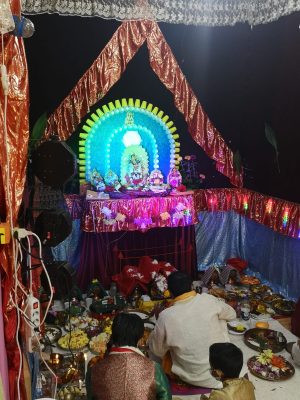
Instead, Mr. Ajan’s last memory of this festival during Durgā Pūjā 2021 was not as happy as the first one, since it was in Rome after the outbreak of COVID19, when the pandemic revolutionized and shocked people’s lifestyle and the ritual itself. When I asked Mr. Ajan about the people who participate to Durgā Pūjā, he answered that there were people from other religious communities and from different ethnic groups, in Bangladesh but also in Italy:
In Bangladesh there are many many people gathered to celebrate together, also Muslims etc. […]
Bangladesh is a Muslim country, but they are very collaborative, and I think in Bangladeshi people celebrate every festival also Muslim festival and Hindu people participate.
I appreciate that is possible to celebrate our festivals in Italia. We appreciate that they give us the permission to celebrate. If you compare it with Saudi Arabia there is not possible, for example, so it’s a lot. In Italy and in European countries people are very gentle and collaborative in my experience[25].
When I asked him about the participants to Durgā Pūjā in Rome, whether they were more women or men, more adults or young people, Mr. Ajan stated:
Basically there are more women. Young people are very interested in seeing and participating to Durga Puja and visiting temples. Women are much more, because men work and don’t have time to go. Women are always at home, so they have more time and, whenever it is possible, they go to the temple[26].
Men of diaspora community are those in charge of work, while women usually stay at home managing the house and children, that makes them have much free time according to a man’s opinion, even if their mansions might keep them busier than any working man.
The next interviewee was with Surya Teja, a 27-year-old Informatic Engineer student from Hyderabad, now residing in Rome. I already knew Surya. I met him a couple of times at University through my Hindi professor, Tanya Gupta. I asked him if he had participated at least once at Durgā Pūjā and he answered me that he was not very much into religion and rituals. That is why, here in Rome he doesn’t participate to Hindu pūjās. He usually gathers with his friends and they all have lunch together. However, he celebrates Durgā Pūjā in India, when he is with his family:
Durga Puja is also called Dashara in northern India, they celebrate it a bit differently but basically the theme is the same. India is a big country and rituals affect every region but in different way. I am going to talk about my region. Last year when I was in India, I celebrate it but because of covid the situation was completely different.
First, is not easy to practice all the religious things in Rome, being in some other country makes difficult to follow religious practices. When in India it’s ok, you can go to a temple and do a random prayer for example, it’s fine. […] It depends on a person: if you are a religious person, you can practice religious praxis also in Rome, but as I told you I am not much into it so I don’t care much. I believe in God but rituals and stuff it’s not a priority for me.
L: So, can you tell me more about Durga Puja? What does it mean for the community?
I think you know the story of Rama, right? I guess so. Dashara is celebrated all over India, almost in every state. But in Southern parts we call it Durga Puja and we have a different story for that. Northern state people celebrate this puja in honor of the victory of Rama on the tenth day. The southern people celebrated for the victory of Devi Durga on demon Mahishasura. These are two main reasons, in India almost every festival is celebrated after the harvest season. Festivals are systematically organized like that. […] maybe there is a reason for that, but I am not pretty sure about that[27].
Mr. Surya revealed something very important that wasn’t mentioned before: Durgā Pūjā mythical and traditional celebration gets interlinked to other Hindu festivities associated to other Gods, like Rāma. In Bengal, the Goddess was anciently worshipped and celebrated in spring (Basantī pūjā), while the worship of the goddess in the autumn for several days is a later practice[28]. During the interview Mr. Surya told me a lot of interesting details about Durgā Pūjā’ s rituals and performances, he put emphasis on local and regional variation of rituals involved in this festival, variations that make every Durgā Pūjā unique. He mentioned a ritual, Bathukamma[29], performed on the tenth day, and other theatrical performances with some huge statues brought around the city and then used to play spectacles, which in northern areas is called ‘Rāmlīlā’. In Hyderabad also, episodes of Rāma’s life are performed in urban and rural places. All of the characters represent something real, represent human beings’ values and vices and for this reason ritual mirrors life:
During those ten days it is believed that Devi comes from a heavenly dimension to the Earth, and she stays with people. She stays with you, you offer her prasada[30], prayers, and love. And then, on the tenth day she goes back. People dance and celebrate and finally they immerse the murti. On the ninth night they have puppet-like huge structures performances with Ravaṇa.
These are symbolical performances, Ravaṇa represents evils and Rama represents good. All Indian Gods and religious concepts are related to men and for men – I mean, men as human being – you should get rid of vices and become like Rama. Rama is considered as the ideal human being. Technically he is a God, but he is considered as the model for all human beings[31].
Furthermore, Mr. Surya added that in his city and region many Muslim people participated in Durgā Pūjā, Hindu, Christian and Muslim people celebrate all festivals without any particular problem or aversion. Asked about minorities, he referred only to the Muslim community, not mentioning Adivasi groups, atheists, and Christians among others. As far as Surya knows, religious festivals and rituals can bring with them political implications, but he trusts that people have critical thinking thus can recognize political propaganda.
I had my last interview with Ms. Binita Nath, a post doctorate researcher at the National Research Council in Italy. She has stayed in Italy for her PHD, but then she returned back to India where she was residing at the moment of our interview. Ms. Binita is born and lives in Assam, Silchar. I already knew her since we worked together and did an interview for my previous research on Durgā Pūjā, so I felt comfortable talking with her and so did she. Since she studied and worked abroad for some time, she had experienced migration moving to Italy and Sweden for study and working reasons; by those times she resided abroad, she found herself celebrating also religious events, like Durgā Pūjā, during her stays. Ms. Binita had a lot to tell me about her experiences, so we start talking about her last memory of Durgā Pūjā 2020 when she was in Rome:
Durga Puja in India is quite different from Durga Puja abroad. Abroad you just do it very customarily but in India it is done in a very big way. Last year, I was in Rome, the previous in Sweden and the year before in Dubai. So, it’s three consecutive years that I am not in India during Durga Puja. This time I hope to be able to celebrate it here[32].
My last memory of Durga Puja… I was in Rome. I was wondering where to spend the seventh day and I was worried since I knew that the pūjā had already started, and I was still unable to offer something to the Gods. I started searching on internet some temples and then I found the two temples in Tor Pignattara that were celebrating but in a small scale. They [temple management’s people] couldn’t make any big scale celebration because of anti-covid restrictions, they couldn’t allow more than 10 people inside the temple, so they were broadcasting the puja on Facebook. I specially requested if I could go just one day and stay inside, and on Navami I achieved it and went to the temple, I was allowed inside. I went in and I saw that there was no Durga idol inside. Instead of Durgā idol they had an earthen pot, called ghat. […] The priest presumes that Durga Mata is in that ghat. It felt really strange because instead of a huge and beautiful idol there were only some earthen pots but that was how it was last year. And in the other temple, Om Hindu temple, similarly they worshipped the ghat, they made a Ghatpuja, but they also made a symbolic Durga Mata with very small tiny models of Durga. Like dolls. Just to get the feeling, because unless you see Durga Mata you don’t get that feeling that is Durga Puja. When I saw that little Durga it felt good that I could at least see Durga Mata’s figure once[33].
It is interesting how nowadays the essential part of the Durgā Pūjā is doing the darśana with the Goddess’ idol, while historically we know that clay idols are a much more recent part of the ritual than the earthen pot. Today, as Ms. Binita stated, substituting the idol with the pot is not a common practice, indeed it is perceived by people as an alteration to ritual praxis; nevertheless, this kind of changes in ritual are necessarily accepted by diasporic community people who are aware of the problems linked to shipping the idol every year. They accept these necessary changes that mark the difference between their religious and cultural freedom in their home country and in the host country, as happens for ritual praxis, in order to adapt their cultural events to migration.
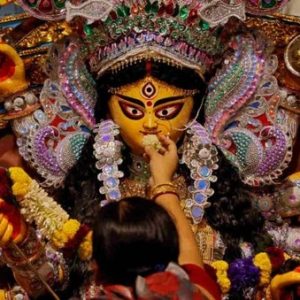
For example, the last rituals performed just before throwing the mūrti in a watercourse are farewell rituals that implies a direct contact with the idol, Ms. Binita explained this process and the changes due to actual necessities:
When Dura Mata is going away, on the last day, everybody goes and offers her things. Some people also give sweets, doing the act of feeding to the idol, putting food on her lips. Just like when a married girl comes to her father house and while going away, the father and the mother bless her, kiss her and tell her: ‘Come again next time’.
On the last day we offer some sweets to the idol and feed it, because we know it’s going to be immersed so we don’t care if it gets dirty, we don’t care about the beauty. We give her sweets, water and say: ‘Now, we have fed you nicely, please come again next year, we will be waiting for you’.
This is done in a very familiar way, she is treated as if Durga Mata was a human being[34]. […] But you will not be able to see such ritual in Italy, or in Rome because they have to keep the murti intact for many years, so all these rituals like feeding the Durga Mata with some sweets you cannot do it because in that way the idol will get spoiled. So, those things are not done there[35].
The previous year, in 2019, Ms. Binita was in Sweden where she celebrated Durgā Pūjā too. I got curious about the differences and the experiences diasporic Hindu communities have in common in two European countries. She clarified:
[…] I didn’t feel anywhere close to India because in India we have a huge festival and it is such for everyone, instead when you’re not in India is like nobody knows that is Durga Puja time. There’s only a small community who has rented a hall and is celebrating there. Durga Puja is not in the entire atmosphere. When you’re in India, Durga Puja is in the entire atmosphere. […] I think the Bengali Hindu community in Rome is much smaller than the one in Sweden, in Stockholm. In Stockholm we had around 3.000 people coming around to celebrate Durga Puja. They were making competitions for best dances, for good food, etc. In Sweden Durga Puja it’s done in quite better way because of a greater number of Hindu immigrants and also more well-to-do people who were organizing the festival[36].
The numbers of the Stockholm’ s Hindu Indian community are higher than the one in Rome. In Sweden they got an idol from Kolkata that year and the organization of competitions with prizes is clear evidence of the strong collective willing to replicate the same dynamics of local celebrations in their home countries during Navarātrī. Diaspora and displacement have an impact on ritual and the way community relates to religious apparatus. As Vásquez states, as practitioners move, they bring everything they are with them, so their religious and cultural background follows them. That would be the reason why practitioners “sought to re-create their religious and cultural lives, carving sacred landscapes through architecture and other embodied practices such as theatre, music and dance. This re-creation, however, is not a mere reproduction of practices and institutions in the homeland”[37].
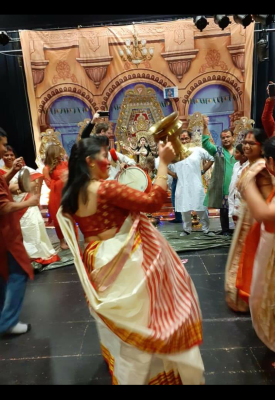
Parallels between Swedish and Indian Hindu communities reveal how interpersonal relationships work within a community that apparently seems united, especially during cultural and religious events:
In Sweden there are a lot of Indian Bengalis, they are almost all Indian Bengalis so we can easily relate to each other. We had a very good communication and contacts. In Rome there are a lot of Bengalis, but they are not Indian, they are Bangladeshi. We are from different countries, also lifestyle is different. I am from India, they’re from Bangladesh, even though my mother tongue is the same because I am from that part of India which is close to Bangladesh. Therefore, I can relate to them, but it is also true that I cannot mix up too much with them because they have a huge Bangladeshi community in Rome and I am the only, or one of the few Indians, so we cannot really go into that big group although they invite us. They are all part of a business community, different sorts of people, while we are from a research group. We don’t have many common things in between. The country is not common, the profession is not common, so it’s difficult to match up[38].
L: So, religious celebrations such as Durga Puja can be considered as occasions to stay together and mix up even if they are exceptional events, right?
Yes, at least for me it is so. Because I only met them [Bangladeshi people in Rome] during the puja at the temple but is not like that they invite me at their home, or I would invite them because they already have a strong and big community so maybe they don’t need other people… and also professions are different.
When I was in Sweden and I went to the Durga Puja, I met a few people and they were all minded people, like all working on research or in industries. I met them during Durga Puja and then we became family friends. We started meeting, seeing each other, etc. Durga Puja, also in Sweden, is traditionally for us a time to make new friends and meet people, but in Rome… maybe for Bangladeshi people is so but for us not that much[39].
The diasporic Hindu Bengali community is internally differentiated by many kinds of social relationships, cultural, economic and political orientations[40]. Between Bangladeshi, West Bengali and Indian Bengali people, who are some of the major diasporic groups that celebrate Durgā Pūjā yearly, there are remarkable differences, and ritual, as one among a huge range of cultural performances, provide an opportunity for common activity but also for re-affirming and representing their “Indianness or Bangladeshi-ness” as McDemott states[41]. Violence and enmity have historical roots whose inheritance is still visible today in Bangladeshi diasporic community’s way of conducting public rituals, also in a diasporic context: Bangladeshi celebrations are less pompous in order to avoid catching people’s attention. Although differences and rivalry might create distance between different groups, it is important to underline the interconnection and interdependence between Bengali communities and the fluidity of social and cultural relationships among members which is often displayed during ritual and cultural performances. Some mixed Bangladeshi and West Bengali groups try to stick closely to their ritual ‘tradition’ when it comes to face religious events, but the re-creation of homeland tradition is inevitably affected by the socio-cultural and political environment of the host society. Ms. Binita stressed that during a religious event, people within a diasporic community, who share the same celebration, can come together and celebrate together but then their identity is marked by so many factors: above all, for Binita stands people’s profession and the practical reasons which influence migration, the country of origin, language, and nationality. All these issues determine differences among people, internal to the community and relationships among them, discarding the concept that displacement makes a community even more united and homogeneous[42]. Once asked Ms. Binita about her first memory of Durgā Pūjā, she answered me something very similar to what Mr. Ajan had previously said to me: she had not nitid memories about, but she recalled the moments when she was a child and received new clothes for Durgā Pūjā. About the mūrti, she stated:
Actually, the main rule is that every year after the puja, Durga Mata is immerged into water but in Rome or in other European countries this cannot happen because they cannot buy an idol every year, since they have to buy it from Kolkata, and it is a very costly affair. So, what they do is once they’ve bought a murti, they keep it for at least five years then they change it. So, in Rome the murti that you see is at least five years old, in Sweden also. In fact, in many places like France and Germany for example, they ship one murti to France and they take it from one place to another because they don’t have a murti for every location. Generally, in Europe they keep the murti as permanent a symbol and use a small ghat, which they change every year, for the visarjan in order to do it in a proper way. […] Then the murti made in India is made manly of mud, and bamboo and as soon as you throw it into water it gets immerged. Buying it every year is kind of a ritual itself, since there are many people, many sculpturers who live by this profession of making murtis; so, if you don’t buy murtis every year how can these people earn their bread? This is also a form of art that will be vanished if there are not people supporting it[43].
By the time, starting from XVIII/XIX century, the public pūjās underwent to huge structural changes[44], due to a more invasive involvement of political and social questions into religious and ritual matters. Therefore, always more and more spectacular ornaments and performances have been prepared and financed by bourgeoise families in order to gain prestige and money, giving birth to competitive but also entertaining and fun contest for prices within the organizers. The pūjās became cultural huge festivals that became a result of artistic, cultural, economic and political forces. Obviously, in a displacement context, all these factors get transformed and disarranged, thus Durgā Pūjā keeps changing with time and keeps changing in diasporic contexts. For example, the Durgā Pūjā celebrations abroad have been shortened in order to adapt them to job and educational schedule of the majority of men and children of the community; public paṇḍāls and structures built for the occasion are exchanged with close and circumscribed spaces since the event doesn’t affect the totality of residents but just a small part of them. Moreover, some procedures of the ritual have been changed like the visarjan, or the immersion of the mūrti, performed on Daśamī, or the farewell rituals before it, etc. In India and Bangladesh, so in a context when mūrti are freely delivered to water courses, mūrti are destroyed every year as prescribed by traditional shastric norms. On the other hand, in a diasporic context that cannot happen, since shipping from India (Kolkata) to another country a mūrti every year is expensive. Respecting ritual praxis is not only a means to affirm community identity but it is also perceived as a duty in order to keep local economy and culture prosperous, it also creates a direct link to tradition, and if tradition is threatened, people’s identity is threatened too. Finally, after focusing on the ritual praxis changes due to displacement, the following section will contain a deep analysis on the historically built connection between the symbolical figure of Goddess Durgā and Hindu women, worshippers and ordinary members of a diasporic community.
The many faces of the Goddess: a warrior, a mother and a daughter

During ritual and celebration time, it becomes easier to analyze and observe the blurring lines between the extraordinary dimension linked to the divine figure of the Goddess and the ordinary dimension, of Hindu women’s lives. As already mentioned in the previous sections, Goddess Durgā is celebrated today as the Mother of humankind. She is praised and treated as the compassionate mother who defeated evil for her children’s sake; in fact, most of the traditional songs and poems performed during Durgā Pūjā deal with the theme of motherhood, marriage, and women’s subjugation to husband’s will[45]. The question is what led to the shift in which the fierce Puranic Slayer of Demons to a Goddess is recognized as a Mother and a loving daughter. Historically, we are witnessing a transformation of the figure of Durgā, who is depicted in texts like the “Devī-Māhātmya” section of the Mārkaṇḍeya Purāṇa, a number of Śākta Purāṇas, such as Bhaviṣya Purāṇa, Brahmavaivarta Purāṇa, Devī Purāṇa and others[46], as a powerful and ‘unmarried’ young woman who cannot be controlled by any male authority, a warrior divine being, created by the Trimūrti but independent and more powerful than them. The first description of the Goddess in the Puranic texts and her main position in the Śākta movements[47] reinforced an original link between the Devī’s cults and blood-impure materials sacrifices. Such fierce depiction of the Great Goddess also produced a link with Tantric movements, associating with esoteric cults[48]. As Flood states, there is no evidence of a ‘Great Goddess’ in the Vedas. There is textual evidence only from the medieval period and this suggests non-vedic, and probably non-Aryan, origins[49]. Then, the centrality of the worship of the Devī and her manifestations in regional and local Tantric traditions has also intensified the connection between the Goddess and counter-hegemonical practices, since her cult is also linked to polluting and impure materials and blood sacrifices[50]. As McDermott states, by the XIV/ XV century, with the medieval texts of Candimangalakavya and the XVI century-Durgāpujatattva[51], the first references to the maternal nature of the Goddess can be traced. By the late XVIII century the explicit link between Durgā and Umā – the mythical Śiva’s beloved wife and daughter, pacific and submissive – was made. Also iconography started changing by late XVII: the representation of the demon slayer Goddess was kept more or less the same, but the main idol was sided by four Gods, Durgā’s daughters and sons. It is interesting to draw the attention on the differences between the first depictions of the Goddess and the later ones, keeping in mind the abysm between the warrior, independent Durgā and the Brahmanical model of womanhood, referred to the normative texts as the Dharmaśāstra[52] with a non-defined model of woman which is the exact opposite.[53] According to shastric texts women had to be passively submitted to a male authority, first within their paternal family and then their marital family. Women’s body and sexuality had to be controlled since their childhood, otherwise their incommensurable power – which is the reproductive function of women’s womb linked to the concept of Śakti – could become destructive and unmanageable, potentially a threat for community’s honor. Moreover, by the end of the XIX and the beginning of the XX century, British Indian society assisted to the rising of many different Indian nationalist movements and the spreading of their political ideals focused on Independence and socio-religious reforms. Hindu nationalist movements, aimed at deconstructing colonial rhetoric that depicted Indian men as effeminate, weak, and in need of a foreign ‘civilizing’ dominion, used religion and women’s recognition in religious and socio-cultural sphere as a means of cohesion and reinvented their identity presenting it as pure, absolute, unique and in contrast with the other cultures. They focused on the depiction of Motherland as a woman and a Goddess (Durgā) that had to be protected and kept pure from the enemy’s invasion, specifically the Muslims and the British. The image of the Mother Goddess as symbol of the Nation was created from the concept of women as a ‘domestic nurture’ and the typical Bengali loving mother, together with the philosophical and religious concept of Śakti (originative unrestrainable power). Soon, women were imposed the model of those perfect and heavenly goddess pure and honorable wives and daughters, proud when they had to represent the nation, pure in order to keep intact ‘their’ men’s honor, but also fierce when they had to support the independentist agenda. Looking at those role models, women started to identify themselves and be identified with Goddess Durgā, since she shared all the characteristics required to be ‘right’ Hindu women’s model, progressively deprived of her terrific and fierce characteristic, depicted as glorious but fragile extraordinary beings to maintain pure. Goddess Durga’s maternal and nurturer nature gained relevance and popularly as a maternal symbol. Local and popular narratives about Goddess Durga depicted her as a daughter and a mother, she is believed to share the same experiences that every other Hindu woman is supposed to live: the same pain and happiness of marriage, the same feeling of nostalgia for living far away from her parents, the same aching of dealing with a hot-tempered husband who, as for the majority of the cases, has not even been chosen by the bride, the not-explicated experience of sexual intercourse and the explicit one of labor. All of this contributes to generate a feeling of union and identification between Hindu women and the Goddess that is highly visible during religious ritual and events.
Shifting from extraordinary to ordinary dimension
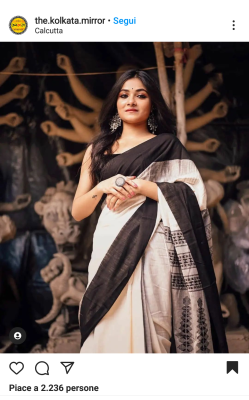
That intimate relationship between the Goddess and Hindu women is reproduced in every single part of the Durgā Pūjā, both in rituals and cultural performances that take place during Navarātrī. The Goddess is currently celebrated as a Mother and sometimes she is also celebrated in the form of Umā, the beloving daughter of Goddess Durgā, associated with the peaceful Śiva’s wife Pārvatī. Umā corresponds to a ritual and iconographic model praised mostly by followers of Vaiṣṇava traditions[54], which tend to deprive Goddesses of the terrific aspect and so the blood sacrifices. The symbolical reference to the custom of marriage – usually a child marriage – has a strong impact on real life, since it highlights some of the tragic aspects of it and during ritual (Durgā Pūjā) they become even more evident and enhanced. Again, according to nowadays ritual praxis, Durgā has to stay away from her family, and she can only return home during the time of celebration, always submitted to the authority of her husband who is still present as an effigy during ritual. As McDermott states: “The tradition of reenacting the Goddess’ return to her husband’s home [on Dashami] helps women to enunciate but not necessarily to change or escape from the pain they experience through the Gahrwal system of out-marriage”[55]. Such depiction of the Devī, virtuous and loving center of normative Brahmanical marital family, make her more human than any other Hindu Gods for women belonging to Hindu community. Every Hindu woman is taught to identify herself with Durgā Goddess and to look at the Goddess as a model for being the perfect mixture of love, compassion, bravery and fury, keeping the last two qualities always tamed by the first ones. Moreover, during ritual every Hindu worshipper – especially women who have a major role during Durgā Pūjā – treat the Goddess as a daughter strengthening an emotional bond with her, feeling closer and similar to her. The interviewees’ opinions about the symbolical and actual connection between women and Goddess Durgā confirms that women are still seen as Goddesses, especially when they are expected to be and act like her while facing life’s problems, and vice versa Durgā is still seen as a model for women. Starting from Ms. Lakshmi, a 40-years-old Bengali English teacher residing in Punjab[56], she revealed something very important about the question of women and their symbolical link with Durgā Mātā. When I asked her if she thought there was a special symbolical or actual connection between the Goddess and Hindu women, she categorically answered not so. But when I asked her if ritual was a means to feel the Goddess as a human being among people during the pūjā, she went:
L: Do you think that Durga becomes real during celebration. I mean, do you think people, during celebrations, feel Durga as a real woman, as a mother, a daughter etc.?
Yes, during Durga Puja people go crazy to see the statue of Ma Durga and during the last day, the tenth day, when the celebrations are over some people are crying, because Ma Durga is going home now. That’s why some people are sad and crying”[57].
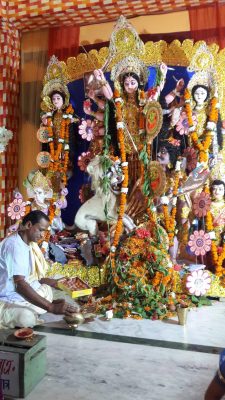
She pointed out the feelings of enthusiasm but also deep sadness for Mā Durgā to go home. During rituals and celebrations, she is perceived as a real person who is going away, as a woman who is going back to her husband’s home and will have to stay away from her paternal family for the rest of the year till next Durgā Pūjā. Ms. Lakshmi told me that Durgā is essentially a mother:
When you see the pandal there are five statues: the statue of Ma Durga, the statue of Ma Sarasvati, statue of Ma Lakshmi, statue of Ganesha ji who is the son of Ma Durga and statue of Karttikeya ji who is another of Ma Durga’s sons. So there are five statues and you can also see a photo frame of Lord Shiva behind the statue of Ma Durga[58].
Even if the answer to a direct question about the link between Durgā and Hindu women was negative, when she started talking about the mythological reasons why the Goddess is celebrated and is represented in a certain way, the link to the figure of the mother and daughter came out spontaneously. Durgā is not celebrated just as a female Goddess who freed humankind and Gods from evil, but she is a mother and a married off daughter and that facilitate a spontaneous identification with her and her duties as a wife and a mother:
I am going to tell you what’s the reason behind the celebrations.
Many old people tell this story.
Ma Durga comes with her two daughters Sarasvati and Ma Lakshmi ji and with her two sons Kartik ji and Ganesh, in her parents’ house. So, the return of Ma Durga to her family house is celebrated during the Puja. When I told you about the frame of Lord Shiva behind Durga statue, it is because Lord Shiva is the husband of Durga, and he is watching her hiddenly. That is why there is a picture frame of Shiva, because Durga has to return soon to her home with Lord Shiva by the end of Navaratri[59].
Moving on to Ms. Gupta’s interview, it is necessary to underline that she drew the attention on the difference between ritual and real life, and the way the exceptional time of ritual makes women cross borders between ordinary and extraordinary dimensions for a certain period of time, which inexorably will end with the returning to everyday life. During Durgā Pūjā, women have major role in preparing and managing the festival and the ritual itself, because they are the ones closer to a Goddess that has lived (according to popular myths about her) their same experience of marriage, separation and displacement, and she is the one who share with them the experience of being a woman in a society dominated by men:
Durga is the strongest female icon. Every Indian woman sort of identifies herself with this figure of protection. There is a special connection between Hindu women and this female Goddess.
L: Do you think that also Hindu men can feel the same connection with Durga Devi in those occasions?
I don’t know, since I haven’t asked men how they felt about it. But I saw that they were very much… how can I say… They were very respectful towards this celebration. But I have a feeling that that respect for the deity, for the Goddess, is not actually applied to their wives, their mothers etc.
It’s kept separate. That’s the feeling I had.
Maybe the celebrations give woman a small social space, but then they have to go back to their real space.
L: Is that a small or hidden space that they have in celebrations?
No, no. At least in Rome it was not like that. In Rome women had a major role in celebrations, they took part in performances, preparing ritual thalis[60], doing things and bringing food. They were not kept apart. Also singing and dancing, even conducting certain programs etc. all the Bengali women, they were very much in the forefront. […] It is not this dimension impacting on real life which has to follow social norms. Social norms is one thing, festival and spiritual celebration is another one[61].
Ms. Gupta highlighted an essential characteristic of the ritual as an expedient to reaffirm the differences between ordinary and extra-ordinary dimensions. In this case, mythological narratives blend both dimensions together occasionally. While ritual is going on, women are no longer ordinary women who have a role in Hindu Bengali community abroad. They can be part of a group taking care of activities they would never do in another context. Ritual and festivals are occasions to get out of their homes and socialize in a context where they don’t have many chances to socialize and cultivate interests, especially in a foreign country. Women of diasporic community are often marginalized and ostracized by the host country society and the community itself, who again consider them the body of their tradition and purity to keep even safer and more hidden in a displacement context. In fact, diaspora consequences on gender relationships need special attention too. Al-Ali affirms that diaspora provide enabling contexts in which existing gender ideologies and relations are both reiterated and challenged. South Asian women have the chance to appeal to more liberal legislatures and they have access to economic resources and rights, but they are also subject to the possible consequences of hardening the notions of ‘cultural authenticity’ and ‘traditions’. Anyway, feminist scholars have fought to deconstruct the image of South Asian woman as passive and agency-less; instead, it is important to remind that agency and involvement in decision-making processes within the household but also within larger communities are always maintained and even empowered in a certain way through participation in religious and cultural events. Nevertheless, Al-Ali remarks the way gender relations symbolize national and traditional values that reiterate the image of woman as a “symbolic border guards”[62] who must behave as ‘proper women’ keeping immaculate diasporic community’s ‘honor’. Social and domestic duties women had to follow strictly in their country of origin have to be observed in the host country too, that is why they are expected to carry out their reproductive, domestic, and religious roles in the diaspora.
About a probable connection between women and Durgā Mātā, Mr. Ajan said:
People have basically just two hands, while Durga has ten hands. […] We expect woman to be like this, like moms do who have to do everything at home for their family.
Durga does the same. Durga has ten hands and moms have ten hands too. They have to do everything. Durga is exactly like my mother: when I am in trouble I always want to talk with my mom.
L: Do you think that all women should be like this?
I don’t think all of them. It’s just that when you have problems you worship her, just like your mother. When you have problems, you think about her and ask your mother for a solution and the same thing is for Durga. She acts like that.
L: Is she a mother?
Yes. When I am in trouble, I pray for her to solve the problems.
L: Even if a woman is not a mother, can she still identify herself with Durga?
Yes, people of all ages, men or woman can![63]
As for the other interviewees, except for some of them, when asked a direct question about the recognition of women as the Goddess and vice versa during ritual and in ordinary life, the answer was negative. Durgā is seen as the mother of everyone, as a Goddess for men, women, children of all ages. Mr. Ajan offered another explanation: women are compared to the Goddess due to the fact that women are the ones who have the social obligation to take care of family and home. Everyone praises them but none of them consider the fact that they have to perform and fulfill gender roles determined by society and kept separate to the ones men are imposed to fulfill.
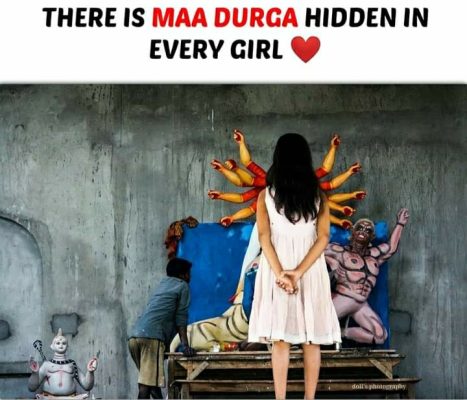
While interviewing Mr. Surya he told me about Durgā Goddess:
L: Do you think that this connection between Durga Puja and the harvest season can be also linked to the fact that Durga is a symbol of fertility? Since Durga is a woman and she is celebrated as a woman and a mother?
I think it’s a quite exceptional fact, since she is maybe the only national Goddesses sided by male Gods.
And she is equal to them. Not only equal, but she is considered even a bit more important than a male Gods. Everything is considered generated by her, even the Gods. She is on the top.
L: As you told God Rama is a model for every man, human beings – especially men since he is a man – has to become like Rama, do you also think that in that same way every woman should become like Durga?
Yes. Every woman is considered Durga. A woman should not become Durgā, she is already considered as such. During these nine days, a form of Durga is celebrated. Its name is Balatripurasundari[64]. She is a girl, the young form of Devi […] and, in order to celebrate, her people take a young girl, under 14 years of age, dress her in traditional dresses like a Goddess, and then they make her sit and she becomes the idol of Durga. Then they pray for her. A woman, she doesn’t need to become a Durga, she is already Durga.
L: Since childhood?
In general. Maybe because of menstrual issues they don’t put elder ladies in that place but just small girls before puberty. Moreover, this form of the goddess is a child and so they choose little girls because of that. I don’t know if these specific rites are celebrated in the northern part but as far as I know they are celebrated in the southern states. As I told, rituals differ from state to state[65].
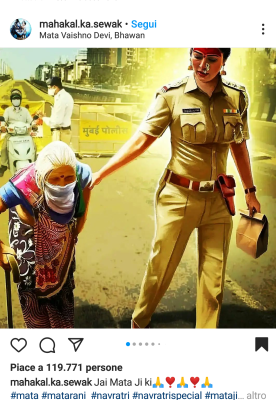
When Mr. Surya told me about the Bālātripurasundarī rite, the Nepali Kumārī’s cult[66] came to my mind, so I asked him if he knew something about it and he answered me he did not. He didn’t know anything about the reasons why traditionally young ladies are chosen for this practice, but he understood menstrual cycle had something to do with that and when I told him something about the Nepali Kumārī, a Goddess considered one of Durgā’s forms, he was really surprised. According to Surya, every woman is recognized as Durgā, every woman is thought as having the same strength but also the same purity of the Goddess. Moving forward to Ms. Binita’s opinions about the symbolical connection between ordinary Hindu women and Goddess Durgā, she affirmed:
As you know, Durga Mata came to Earth to defeat evil.
Durga came to Earth when Asur was going to the heavenly dimension where gods reside, and he was creating chaos. […] She came to defeat evil when all the other gods couldn’t. Durga Mata came and killed Asur so that she became a symbol of power but not ferocious power. A power that comes into picture and it is used because she loves Earth and its inhabitants: her children.
So, Durga Mata is always symbolizing that perfect mix between power, compassion, love, care, everything[67]. That’s way the role of women in Durga Puja is major. Everybody looks at Durga Mata and takes strength from her since childhood. Every girl, every boy, everybody looks at Durga Mata and looks at how she takes care of her children.
All the goddesses are powerful ladies, but she is more than them since she is able to manage lord Shiva, her husband, who is very hot tempered.
Actually, there are many stories around her, and everyone feels she is not only a Goddess but someone very human, with whom they can relate themselves. So, every woman can relate to Durga Mata and think: ‘If she is so powerful, we can be that powerful too’.
I am doing a job but still I can be a good mother and so on[68].
If I am a housewife, If I am a working lady, if I am a doctor, if I am an engineer, if I am a police lady also, still I have to manage my home, I have to manage my family, prepare good food for my children because if Durga Mata can do it I can also do it[69].
You know, when we see our mums going very fast, doing this and that thing at home, we use to say at home ‘Oh, you are Durga Mata, you have ten hands, you can do it, we cannot do it.
Durga Mata is like an example of perfection because she is the ultimate power… Durga has ten hands and also women, who are always doing a lot of things. […] A lady can do a lot of things together, working, taking care of the house, of her parents, her children her husband. A lady is multitasking like Durga Mata who is her ultimate model[70].
During Durga Puja, everyone goes to buy clothes for her, and the Goddess is treated like the daughter of the family, in every family. We assume that she has left her husband’s house and come to the temple and in everyone’s own house. Durga Mata is coming with all her children so that is why we people, even in my family, when we go buying new clothes for us, we remember to buy at least one new sari[71] for Durgā Mātā and then we go offering it to her at the temple[72].
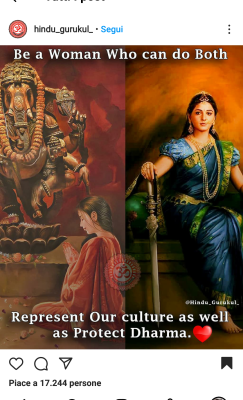
Lastly, Ms. Binita offered a fascinating analysis demonstrating how in popular opinion a certain traditional imagery that depicts women as Goddesses is still alive, since society expected them to be like Goddesses at the moment of managing the house, family, and work. These social roles are never questioned, at least not for my interviewees. Although the differences between ordinary women and the Goddess are evident, the imagined links are present through a certain connection and identification with women as daughters and mothers. Even if it cannot be perceived, this imagery charges women with a responsibility that can frustrates them, since the Durgā is still an unreachable model even if it can be felt as close. Mythically, the Goddesses is always thought as sharing a common faith with ordinary Hindu women’ who experience marriage, motherhood, and separation, without leaving any space for dissent or deconstruction of such gender-related norms.
Conclusion
Durgā Pūjā festival is an incredible experience that animates both people and places, in West Bengal and all over the world. It is a great socio-cultural event that strengthens and enhances Hindu Bengali community, especially in a displacement context. Even though abroad the festival doesn’t affect the majority of people, nor implies the changing of urban places and atmosphere, still, within diasporic communities the celebrations are very much felt both as a mean to reaffirm individualities and feeling of belonging to a specific community. Durgā Pūjā is a celebration for everyone, as all interviewees has declared, a celebration for Mātā Durgā’s children involve the whole Hindu community, but the ones who see themselves mirrored in the Goddess are mostly female worshippers. Displacement has consequences on both ritual praxis and cultural references: like rituals change for practical reasons and the liturgy is adapted to different necessities, so it happens for Durgā’s symbolism. The article demonstrated, how during ritual the barriers of ordinary and extraordinary dimensions can be easily crossed, especially if we focus on the culturally and politically made-up linkage between Hindu women and Goddess Durgā. On the one hand, Hindu women can feel themselves empowered by the connection with the divine Durgā, since they look at her as the embodiment of perfection, since they are supposed to deal with their work, families, children, and husbands as Mother Durgā did. On the other hand, this model has historically been and continues to be constraining for Hindu women, belonging to Indian, Bangladeshi, or diasporic community. Today, Hindu women’s pressure to accomplish with this model is still present and the gender-specific roles of mother/wife/daughter that women are supposed to accomplish are never put into question while referring to Durgā Mātā. At the same time, there is no reference to the celebration of Durgā as a virgin warrior woman with whom also unmarried women and widows can identify themselves. All interesting issues that interviewees have talked about are hints of further research on how human relationships with divine dimensions are constantly changing and on the possible ways to analyze them during rituals. Such new research spaces could emerge through analyzing the creation of linkages between women and extraordinary beings in order to deal with everyday life’s challenges.
Bibliography
“Dharmaśāstra.” Encyclopedia Britannica online. October 16, 2021. https://www.britannica.com/topic/darshan .
Al-Ali, Nadje. “Diaspora and gender.” In Diasporas. Concepts, Intersections, Identities, 118-122. Zed Books Ltd, London, 2010.
Chatterjee, Kumkum. “Goddess encounters: Mughals, Monsters and the Goddess in Bengal.” Modern Asian Studies 47.5 (2013): pp. 1435-1487.
Chatterjee, Mohona. “The Oral Tradition of Agomoni Songs as Intangible Heritage: ReReading the Marital Migration of the ‘Bengali Bridal Diaspora.” postScriptum: An Interdisciplinary Journal of Literary Studies 5.2 (2020): 202-214.
Flood, Gavin. An Introduction to Hinduism. Translated by Mimma Congedo. Torino: Piccola Biblioteca Einaudi, 2006.
Letizia, Chiara. “The goddess Kumari at the Supreme Court Divine kinship and secularism in Nepal.” Focaal Journal of Global and Historical Anthropology 67 (2013): 32-46.
McDermott, Rachel Fell. Revelry, Rivalry, and Longing for the Goddess of Bengal: The Fortunes of Hindu Festivals. New York: Columbia University Press, 2011.
Rodrigues, Hillary Peter. Ritual Worship of the Great Goddess. The Liturgy of the Durgā Pūjā with Interpretations. Albany: State University of New York Press, 2003.
Vásquez, Manuel A. “Diasporas and religion.” In Diasporas. Concepts, Intersections, Identities, 128-133. London: Zed Books Ltd, London, 2010.
[1] Navarātrī (नवरात्री) “The Nine nights”. A pan-Indian ten-day-festival held in autumn that celebrates the victories of both Durgā and Rāma over demonic chaos, activities tied explicitly to the kingly, warrior class, p.2 rivalry
[2] Rachel Fell McDermott, Revelry, Rivalry, and Longing for the Goddess of Bengal: The Fortunes of Hindu Festivals (New York: Columbia University Press, 2011), 12.
[3] Triad of the three gods Brahmā, Viṣṇu, Śiva.
[4] Mūrti (मूर्ति) refers to “consecrated physical objects” and is associated with the worship of a deity (pūjā). Mūrti (or pratima or arca) refers to “image” or “picture” and are physical objects consecrated for worship. wisdom
[5] Darśana (दर्शन): receiving the blessing sight of the deity. P. 285
[6] Hillary Peter Rodrigues, Ritual Worship of the Great Goddess. The Liturgy of the Durgā Pūjā with Interpretations, (Albany: State University of New York Press, 2003), 1.
[7] Gavin Flood, An Introduction to Hinduism, trans. Mimma Congedo (Torino: Piccola Biblioteca Einaudi, 2006), 248.
[8] The vital Breath, essence, life.
[9] The ancient texts, live the Devī Māhātmya and Kālikā Purāṇa, only refers to the adoration of an earthen pot (ghaṭ) into which the Goddess’s presence was invoked. By the mid-nineteenth century the paṭ and the kāṭhkodāis became popular: the first ones were two-dimensional watercolor drawings of the Goddess, the second ones were woodcut prints colored by hand. McDermott, Revelry, Rivalry, and Longing for the Goddess of Bengal: The Fortunes of Hindu Festivals, 104-105.
[10] Manuel A Vásquez, “Diasporas and religion,” In Diasporas. Concepts, Intersections, Identities, (London: Zed Books Ltd, London, 2010), 128.
[11] Vásquez, Diasporas and religion, 128.
[12] Pūjārī (पूजारी) refers to a priest, or devotee who performs worship of the deity.
[13] Tanya Gupta, online interview by the author, Marano Equo (Rome), Italy, July 7, 2021.
[14] Ibid.
[15] Ibid.
[16] Some of the interviewer’s questions are quoted with the aim of recreating the actual conversation for a better understanding of the interviewee’ statements.
[17] Visarjan (विसर्जन) the dispersal or immersion of the murti in a watercourse.
[18] Tanya Gupta, online interview by the author, Marano Equo (Rome), Italy, July 7, 2021.
[19] Ghaṭ or Ghaṭa (घट्), a water-pot.
[20] Joya Choudhury’s interview was not selected for the article.
[21] Ajan Choudhury, online interview by the author, Marano Equo (Rome), Italy, July 9, 2021.
[22] Saptamī in Sanskrit.
[23] Mandir (मन्दिर), temple in Hindi/Bengali (মন্দির Mondir).
[24] Ajan Choudhury, online interview by the author, Marano Equo (Rome), Italy, July 9, 2021.
[25] Ibid.
[26] Ibid.
[27] Surya Teja, online interview by the author, Marano Equo (Rome), Italy, July 7, 2021.
[28] “For many devotees Durgā Pūjā starts on Mahālayā, the new moon night of the month Aśvin. Apparently, this same period of the year was already the time of different cults, linked to the harvest season According to Jogesh Chandra Roy Bidyanidhi, the autumnal Durgā Pūjā is basically a festival which is celebrated after the season of rains is over and the harvest is brought in. The worship of the goddess was transposed on to a pre-existing festival celebrating the abundance of autumn.” Kumkum Chatterjee, “Goddess encounters: Mughals, Monsters and the Goddess in Bengal,” Modern Asian Studies 47.5 (2013): 1444.
[29] బతుకమ్మ (Bathukamma Telugu)
[30] Prasād (प्रसाद): Sanctified food offered to the Gods. Essential part of every pūjā, it is meant to be shared among worshippers at the end of the ritual.
[31] Surya Teja, online interview by the author, Marano Equo (Rome), Italy, July 7, 2021.
[32] Binita Nath online interview by the author, Marano Equo (Rome), Italy, August 11, 2021.
[33] Ibid.
[34] Emphasis added.
[35] Binita Nath online interview by the author, Marano Equo (Rome), Italy, August 11, 2021.
[36] Ibid.
[37] Vásquez, Diasporas and religion, 130.
[38] Emphasis added.
[39] Binita Nath online interview by the author, Marano Equo (Rome), Italy, August 11, 2021.
[40] McDermott, Revelry, Rivalry, and Longing for the Goddess of Bengal: The Fortunes of Hindu Festivals, 233-234.
[41] McDermott, Revelry, Rivalry, and Longing for the Goddess of Bengal: The Fortunes of Hindu Festivals, 234.
[42] McDermott, Revelry, Rivalry, and Longing for the Goddess of Bengal: The Fortunes of Hindu Festivals, 228-232.
[43] Binita Nath online interview by the author, Marano Equo (Rome), Italy, August 11, 2021.
[44] McDermott, Revelry, Rivalry, and Longing for the Goddess of Bengal: The Fortunes of Hindu Festivals, 14.
[45] Mohona Chatterjee, “The Oral Tradition of Agomoni Songs as Intangible Heritage: ReReading the Marital Migration of the ‘Bengali Bridal Diaspora,” postScriptum: An Interdisciplinary Journal of Literary Studies 5.2 (2020): 202-214; McDermott, Revelry, Rivalry, and Longing for the Goddess of Bengal: The Fortunes of Hindu Festivals, 79-85.
[46] McDermott, Revelry, Rivalry, and Longing for the Goddess of Bengal: The Fortunes of Hindu Festivals, 12.
[47] Śākta traditions enhances the figure of the Goddess and recognize the centrality of the Goddess’s creative energy (śakti). Through śākta texts such religious tradition became explicit both in its Puranic and Tantric manifestations. Flood, An Introduction to Hinduism, 238.
[48] From Tantra texts developed another devotional traditions centered on the Devi. The Tantric cult of the Devi is deeply rooted in the Tantras composed around the XI century, divided into two categories: one based on the Devi as a loving motherly figure and the other one based on the Goddess as a fierce warrior. Flood, An Introduction to Hinduism, 253-254.
[49] Flood, An Introduction to Hinduism, 179.
[50] McDermott, Revelry, Rivalry, and Longing for the Goddess of Bengal: The Fortunes of Hindu Festivals, 190-220.
[51] McDermott, Revelry, Rivalry, and Longing for the Goddess of Bengal: The Fortunes of Hindu Festivals, 91.
[52] Dharmaśāstra: (धर्मशास्त्र): ancient Indian body of jurisprudence that is the basis, subject to legislative modification, of the family law of Hindus living in territories both within and outside India. “Dharmaśāstra”, Encyclopedia Britannica online, October 16, 2021, https://www.britannica.com/topic/darshan .
[53] Flood, An Introduction to Hinduism, 175-176.
[54] Vaishnava (वैष्णव, vaiṣṇava) or vaishnavism (vaiṣṇavism) represents a tradition of Hinduism worshipping Vishnu as the supreme Lord. Similar to the Shaktism and Shaivism traditions, Vaishnavism also developed as an individual movement, famous for its exposition of the dashavatara (‘ten avatars of Vishnu’).
[55] McDermott, Revelry, Rivalry, and Longing for the Goddess of Bengal: The Fortunes of Hindu Festivals, 90.
[56] Ms. Kanjilal is the only interviewee who has never been part of the Bengali diasporic community in Rome. Nevertheless, she is part of the Bengali community residing in Punjab, a religious and cultural minority.
[57] Lakshmi Kanjilal, interview by the author, Marano Equo (Rome), Italy, June 9, 2021.
[58] Ibid.
[59] Ibid.
[60] Thālī (थाली f.) A cooking pot, a plate, a dish.
[61] Tanya Gupta, online interview by the author, Marano Equo (Rome), Italy, July 7, 2021.
[62] Nadje Al-Ali, “Diaspora and gender,” In Diasporas. Concepts, Intersections, Identities (Zed Books Ltd, London, 2010), 120.
[63] Ajan Choudhury, online interview by the author, Marano Equo (Rome), Italy, July 9, 2021.
[64] Bālātripurasundarī
[65] Surya Teja, online interview by the author, Marano Equo (Rome), Italy, July 7, 2021.
[66] The national Kumārī of Nepal is a child who lives a ritual life until puberty. She is considered and praised as a goddess of the nation. As such, she used to bless the king by marking his forehead with red vermilion paste (tika), thus legitimating his rule for one more year. Chiara Letizia, “The goddess Kumari at the Supreme Court: divine kinship and secularism in Nepal,” Focaal Journal of Global and Historical Anthropology 63 (2013): 33.
[67] Emphasis added.
[68] Emphasis added.
[69] Emphasis added.
[70] Emphasis added.
[71] Sāḍī (साड़ी) Indian traditional female indument.
[72] Binita Nath online interview by the author, Marano Equo (Rome), Italy, August 11, 2021.


